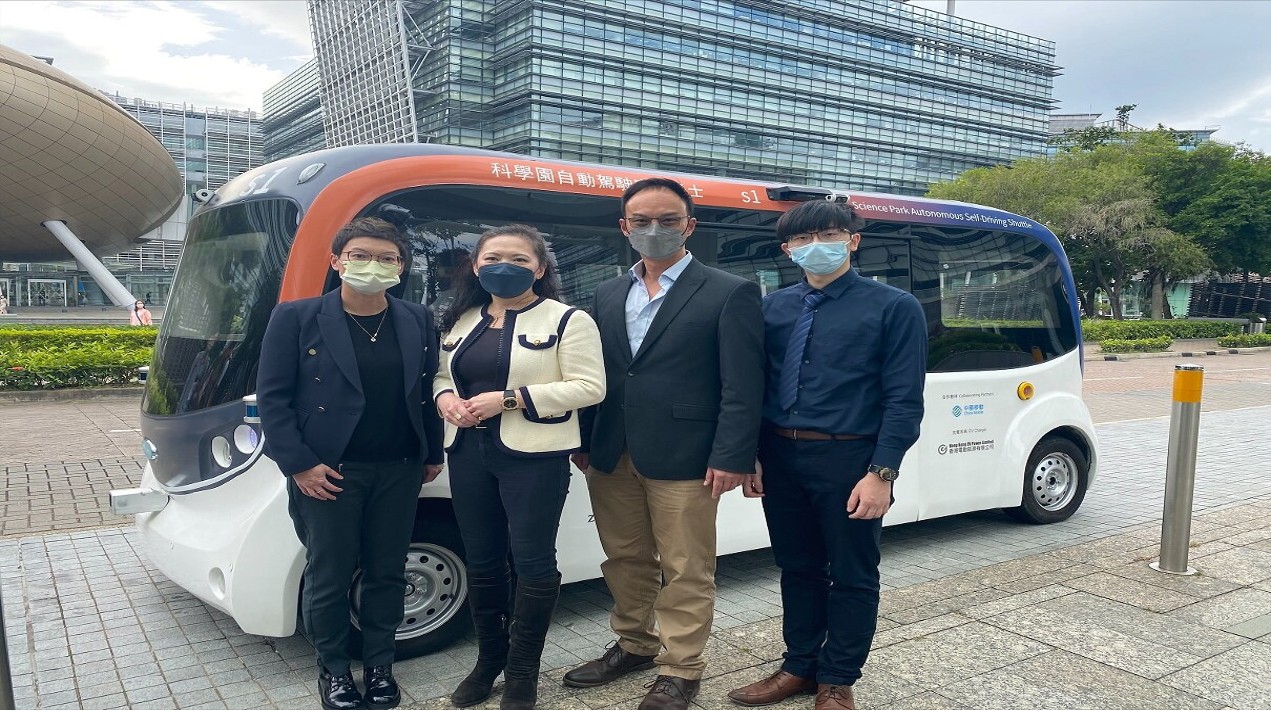
The Hong Kong Science and Technology Parks Corporation (HKSTP) recently announced, alongside a park company, the launch of an autonomous vehicle trial on open roads within Science Park at Pak Shek Kok as permitted by the Transport Department of HKSAR Government.
The trial creates a first-and-last-mile transport connection enabled by an autonomous vehicle to simulate a critical transit service connecting commuters to and from public transportation systems in a smart city environment. Science Park provides the ideal testing ground for collecting critical real-world data to support the development of smart mobility solutions and the deployment of the government’s smart city blueprint.
For some time now, HKSTP has been investing resources to drive smart mobility innovations and applications. By entering partnerships with tech ventures and leading corporations in key industries, HKSTP has established infrastructure and platforms for comprehensive testing and development of smart city applications via IoT and 5G technologies.
The Park has achieved this latest milestone in the city’s development by opening up a full test site for the partnering park company and other smart city innovators. The eight-seater autonomous vehicle supports the latest vehicle-to-everything (V2X) technology and 5G connectivity. It will operate along the tentatively planned route along the East and West Avenues at the Science Park.
The autonomous vehicle trial will be deployed in two phases: phase one is available for park companies by reservation for testing under live scenarios, while phase two will extend availability to the wider public for trials in 2023 on weekdays and on occasions.
The data collected during the trial will be consolidated into the STP Platform. It will then be analysed with combined traffic and transportation data, supporting the future development and application of autonomous vehicles across the public transportation systems in Hong Kong.
The HKSTP CEO noted that this autonomous vehicle trial is a key milestone in the journey of making autonomous vehicles a reality for Hong Kong, made possible by close cooperation with regulatory bodies. This involvement is important as the application of such technology can only be successful if developed together with regulatory frameworks.
The CEO of the partnering firm expressed excitement over being the first MaaS autonomous shuttle service in the Science Park. It was noted that the company is committed to contributing to the development of smart mobility and hopes that the autonomous vehicles can soon be extended to the nearby residences in Pak Shek Kok which will encourage more people to enjoy the first-and-last-mile concept and eventually enhance our public transport system.
In May 2022, HKSTP also collaborated with the Transport Department on a pilot trial of Electric Mobility Devices (EMDs) to provide testing scenarios to assess the impact of using e-scooters and power-assisted pedal cycles along public cycling routes. HKSTP will continue to collaborate with different stakeholders across industries to unleash the full potential of smart mobility innovation that aligns with the ‘Hong Kong Smart City Blueprint 2.0’ as promulgated by the HKSAR Government.
Features of Autonomous Vehicle
- The autonomous vehicle uses rear-wheel drive and can carry up to eight commuters (including an authorised operator).
- Equipped with air conditioning and an in-vehicle display, it can support V2X and 5G networking.
- There are 11 different sensors in the vehicle which enable the system to detect people, objects, and vehicles within 70 metres. The system includes:
- four LiDAR
- four Ultra-sonic sensors
- a Real-Time Kinematic (RTK) sensor
- an Inertial Measurement Unit (IMU) sensor
- an AI camera
- The autonomous vehicle can operate at up to 160 km of travel after a single charge of around three hours.
Hong Kong is keen on both Smart Nation development as well as sustainability. In September OpenGov reported that researchers at HKU’s Department of Mechanical Engineering had developed a rechargeable aqueous battery with a magnesium metal anode which opens a new direction for the development of post-lithium-ion batteries.
















